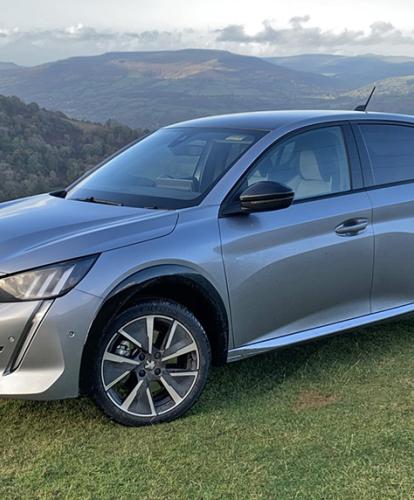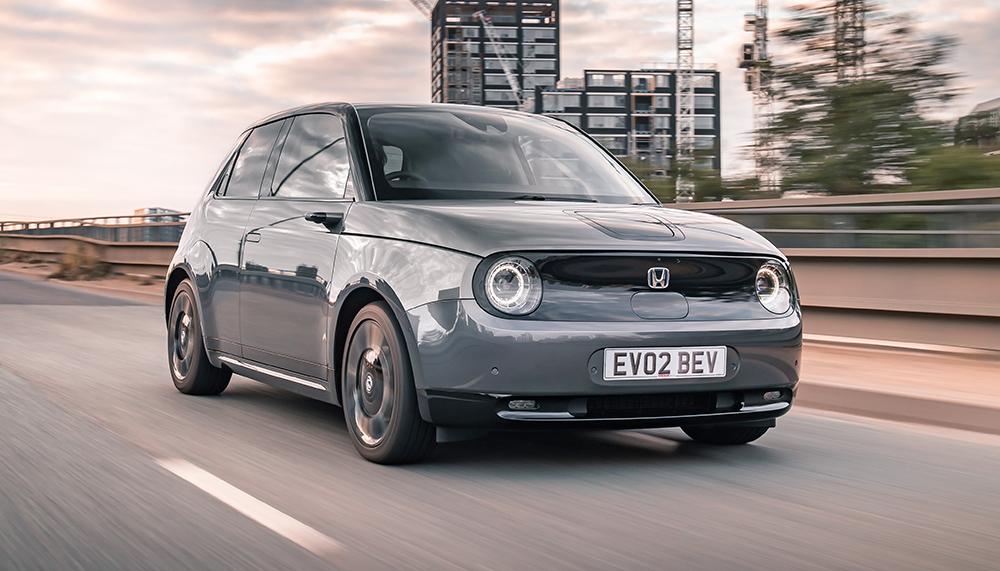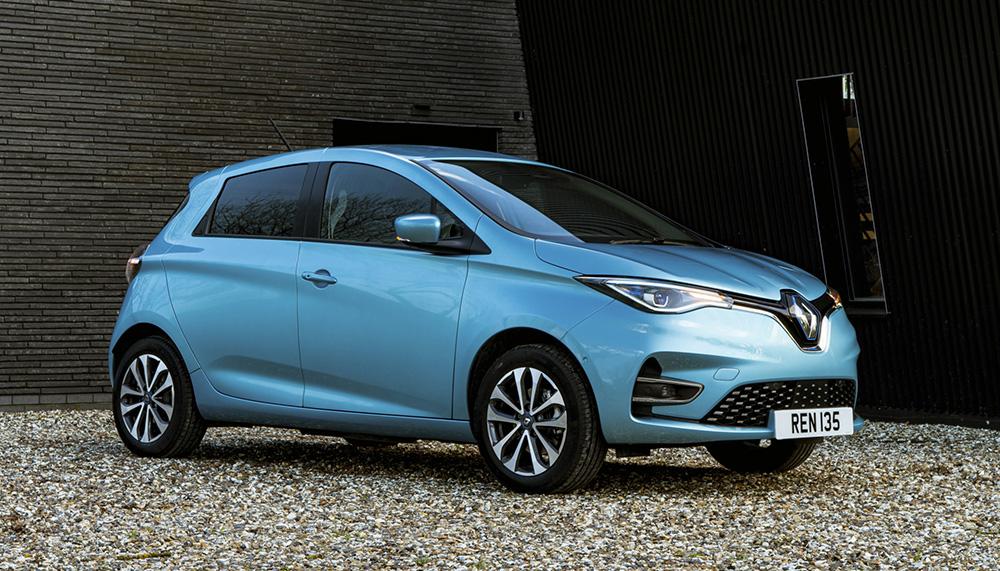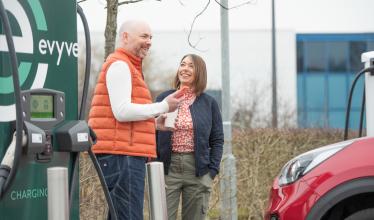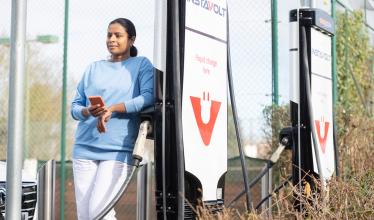Zapmap verdict: “A key model in seeing EVs go mainstream, the Peugeot e-208 offers a good balance between range, price, and driving dynamics.”

- ● OTR: £26,025
- ● Category: Supermini
- ● Tax: £0 VED – 0% BIK
- ● Cost to charge: £8.00
- ● Emissions: 0 g/km CO2
- ● Cost per mile of range: £120
Range & charging

The e-208 is Peugeot’s first proper EV – we’re not counting the iOn, which was a rebadged Mitsubishi i-MiEV – and is built on the PSA Group’s latest platform, designed with electrification in mind. As such, the e-208 is offered alongside conventionally-powered 208 superminis, and in fact seemingly publicised more than the petrol and diesel models. Peugeot is clearly proud of its e-208, which shares an architecture and drivetrain with group stablemates, the Vauxhall Corsa-e and the DS Crossback E-Tense – Peugeot’s version covers 217 miles on a charge.
There is one configuration available:
-
- ● Peugeot e-208 – 100 kW – 50 kWh – 217 miles
In real-world driving, the e-208’s range varied greatly depending on usage. It’s to be expected to a degree, but I’ve not encountered many recently launched EV that an both exceed the WLTP official figures in some circumstances, and come considerably under in others. The typical range available from driving largely on open roads – both country routes and motorway – was around 150-160 miles on a charge. This is over pretty hilly terrain, but WLTP figures are usually pretty accurate, so I was expecting this to be around the 180 miles mark. That said, urban driving saw a significant swing the other way, with a range of about 280 miles comfortably possible.
Conscious use of the D/B modes is essential for extending that range. The Peugeot will almost coast in D mode such is the light level of brake energy recuperation. B mode is much stronger, and will deal with most scenarios well, but a stronger setting/level would have been welcome in town as the e-208 doesn’t get close to ‘one-pedal’ driving on the most part, unlike rivals such as the Renault Zoe, Mini Electric, and Honda e.
Either way, the range will be ample for most, as it’s unlikely that those regularly covering long distances will be looking at superminis, let alone EVs. Most drivers will only need a charge a week, so it’s occasional longer trips that will require the use of the e-208’s raps charging potential. It can ultra-rapid charge at up to 100 kW from CCS DC units, though most of the time drivers will be using the 7 kW AC on-board charger.
On the road

As the e-208 is pitched as a main part of the 208 range, it should come as no surprise that it drives as well (if not better) as the other models in the line-up. The low centre of gravity helps with this thanks to the battery being paced in the floor, but Peugeot’s famed suspension expertise have come to the fore here too. It’s no sports car, but the e-208 drives nicely, and its eager nature is complemented by the electric powertrain’s instant response.
The 100 kW electric motor feels enough for the e-208 – something that can’t be said about some rival models – and it will deal with motorway speeds easily enough. Its natural habitat is on smaller roads, as it performs far better in town and on rural routes. Here, the e-208 drives very nicely, and can either potter about or be driven with gusto. Peugeot’s i-Cockpit helps with matters here, as the small steering wheel aids the e-208’s agility. It’s something that can divide opinion, but I love it, as it makes for a far better driving position by my reckoning. What it certainly does is help agility, which comes in handy in tight spots such as car parks and city driving.
Comfort & Practicality

The e-208 – like the 208 – isn’t the most practical supermini on the market. If you’re after maximum space, or you regularly carry four adults and/or a boot’s worth of stuff, look elsewhere. However, as a car that regularly caries only a couple of people, or two adults and two children, the e-208 performs well enough The boot is not the smallest on the market, but neither is it the biggest, and the rear doors are not particularly big for an adult to climb in to.
Further forward, the front seat occupants are well catered for, and the materials used throughout feel of a really good quality. There’s a premium air to the e-208, and the part leather/part cloth upholstery looked and felt great in the test model. The seats are comfortable and supportive, and the touch surfaces are as good as models in a class above. Where a short time ago, Peugeot’s cabins were pretty plain, they are now a real strength. Piano key switches and touch buttons, a decent widescreen infotainment system, and customisable digital driver’s instruments are nice touches. The centre console is angled towards the driver, which is rare nowadays, but a lovely element for the buyer.
Tech & Specifications

Peugeot’s added its latest interior features to the e-208, which means drivers get a stylish electric drive selector, good graphics and decent response times from the infotainment system, and the aforementioned i-Cockpit is great to look at and nice to use. The driver feels as though they’ve been focused on, and that will be enough to persuade some buyers to pick the Peugeot over other models.
In an increasingly competitive market, the e-208 performs well as an electric supermini. It’s not got the same range available that you can get from the Renault Zoe for example, or crossover rivals such as the Hyundai Kona Electric. However, it drives better than these competitors, and will travel further on a charge than “drivers’ EVs” in the shape of the Mini Electric and Honda e – plus it has the style to match. It’s a middle-ground, but that will appeal to many buyers wanting a good supermini with a good range and good driving experience. It doesn’t excel anywhere, but performs well pretty much across the board.
